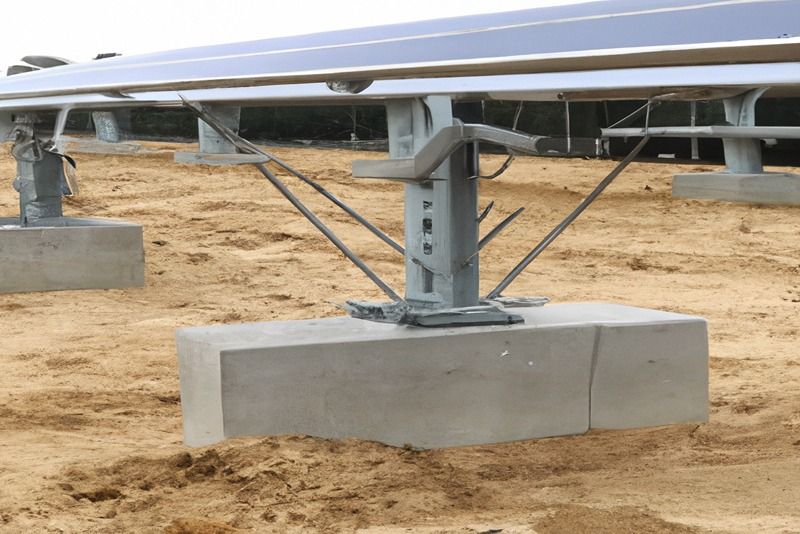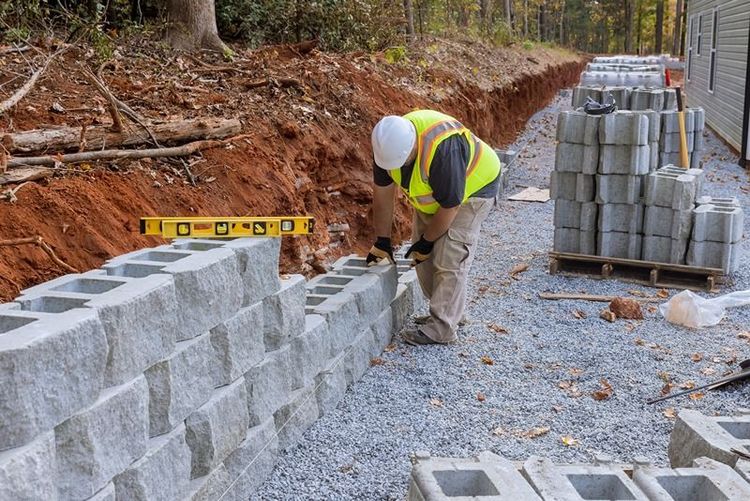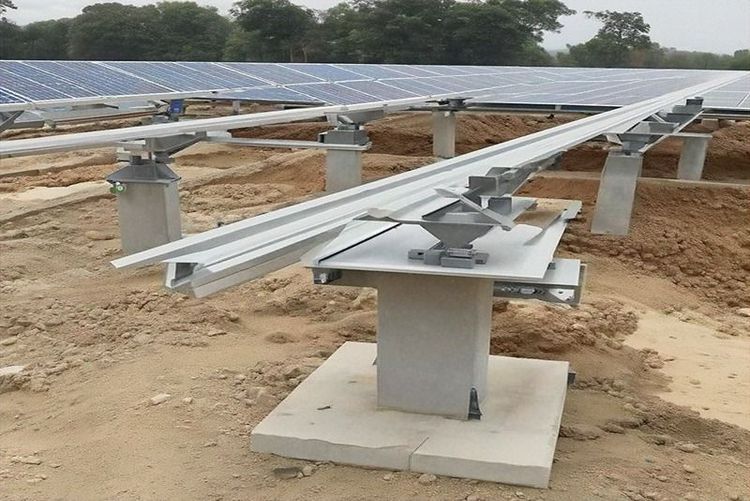Steel and concrete are commonly used for solar panel support structures because of their high strength-to-weight ratio and durability. Steel structures are often prefabricated, allowing for quick installation and transportability. Concrete is robust and can withstand harsh environmental conditions and heavy loads, providing stability and longevity to solar panel installations. Concrete is made of cement, aggregates, and water. Cement is produced by grinding limestone, clay, and minerals and heating them at high temperatures in a kiln.
Solar ballasts are concrete block mounts for solar arrays. Unlike traditional installation methods, which require drilling and cutting into a home's roof or the ground to attach mounts directly, solar ballasts secure arrays without penetrating surfaces. These ballasts protect solar arrays from shifting and lifting off during windy conditions.
This feature is particularly beneficial for flat-top and low-sloped roofs, which lack adequate drainage systems and are thus more susceptible to water damage if holes become unsealed. Moreover, concrete ballasts enable solar array installations in challenging environments such as wet or moist areas and landfill sites, expanding the possibilities for utilising otherwise unusable land for renewable energy generation.






 +91 7208055523
+91 7208055523
 Help & support
Help & support
